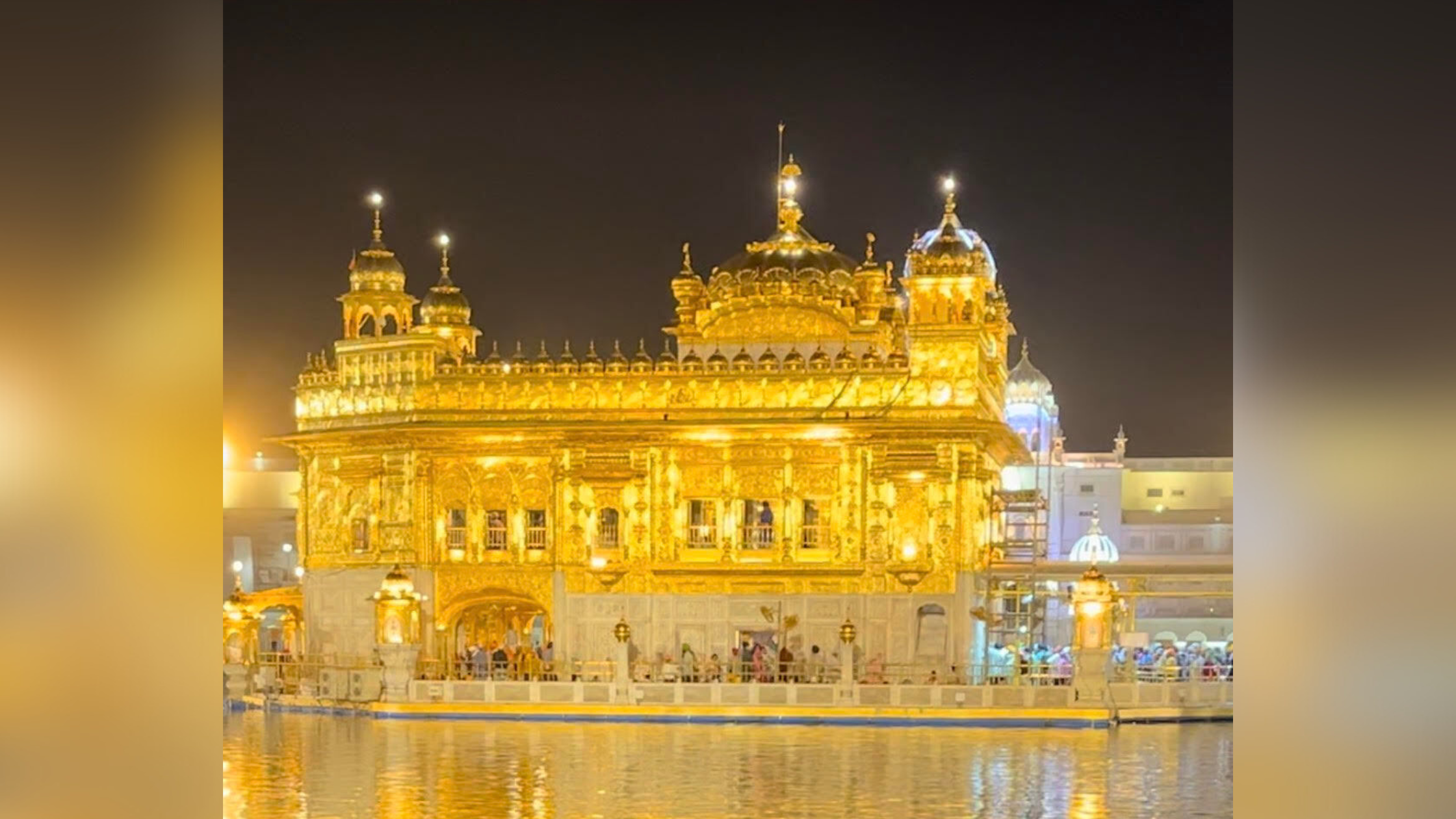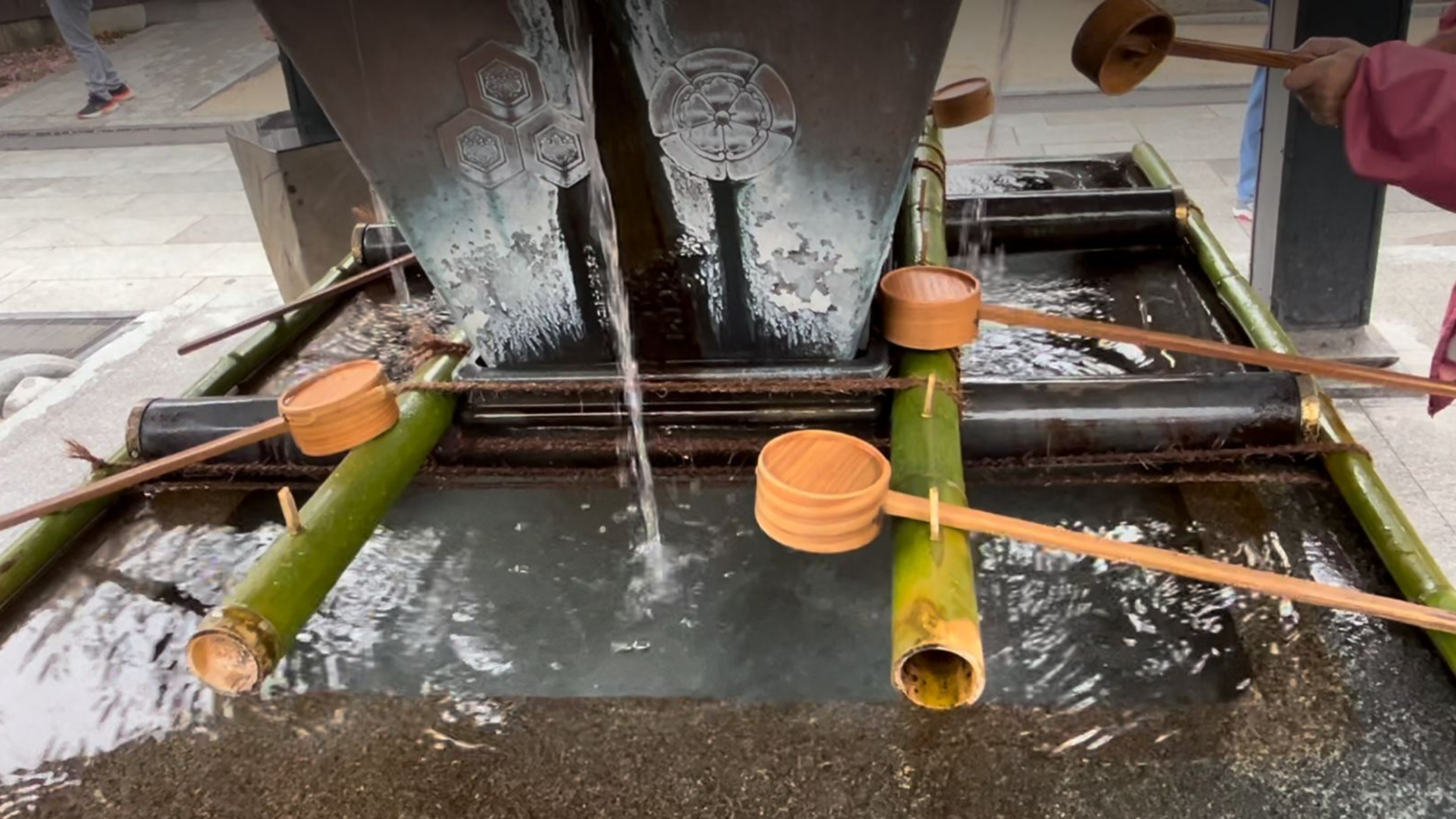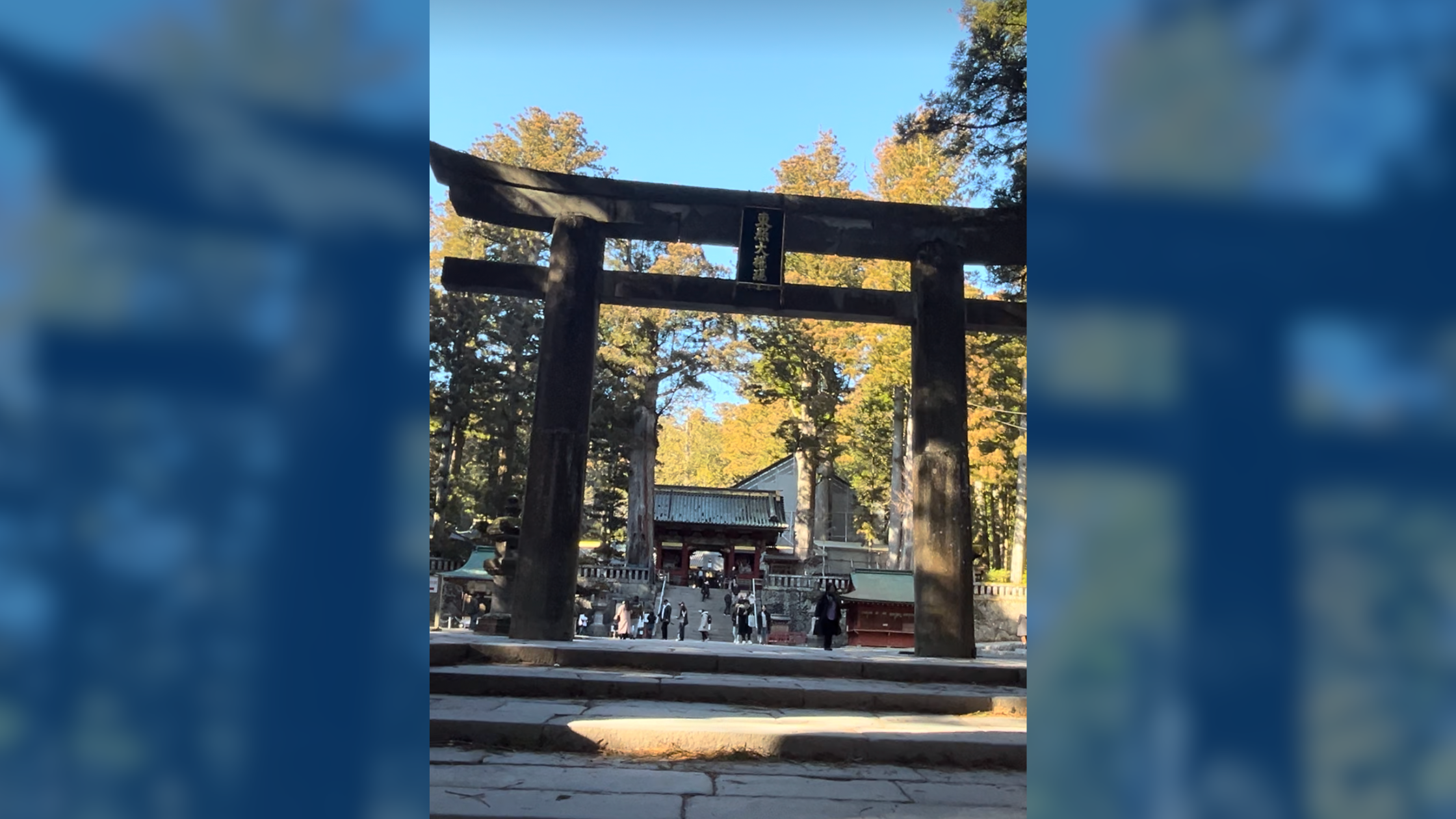I’ve had the good fortune to visit many places, but none prepared me for Delhi. This city is extraordinary and almost beyond the imagination. There’s an abundance of sights, sounds and smells that is simultaneously incredible and overwhelming. I want to bring you along with me to share with you a bit of what Delhi can offer by recounting the three evenings I spent here. The days presented their own surprises but the evenings offer plenty to talk about.
Evening 1: The Sufi Tomb

Hours after arriving, we get a tuk-tuk (a cross between a taxi and a scooter) to cross town to the Nizamuddin Dargah. This location holds two tombs, the final resting place of two Sufi saints. Sufis are Muslim mystics. They focus on love of God expressed through poetry (Rumi is the best known Sufi poet), song, and practices like sacred dance and chant.
The area covers multiple blocks of pedestrian streets marked at the entrance with the beautiful blue lights seen above. The day’s fast has recently ended (it’s Ramadan), so folks are eating, shopping and visiting.
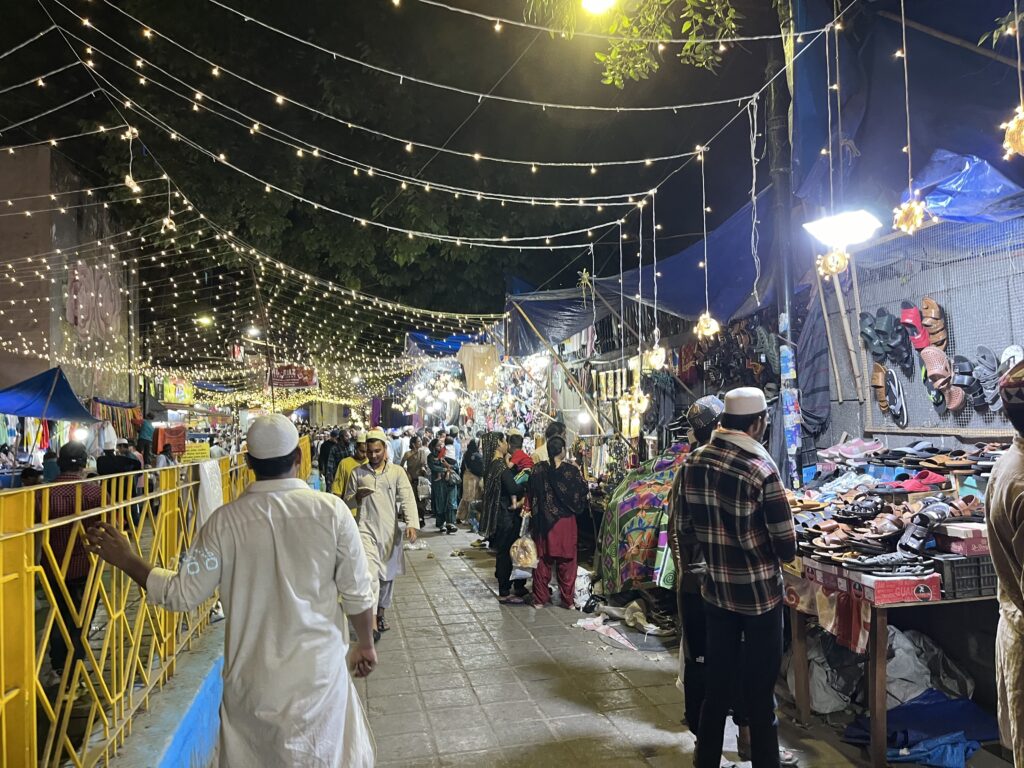
After parting with your shoes, you are led down a series of tunnel-like alleyways. It feels like you are surely lost, but folks encourage you on, and eventually, you emerge to find one of the tombs. It’s gorgeous.
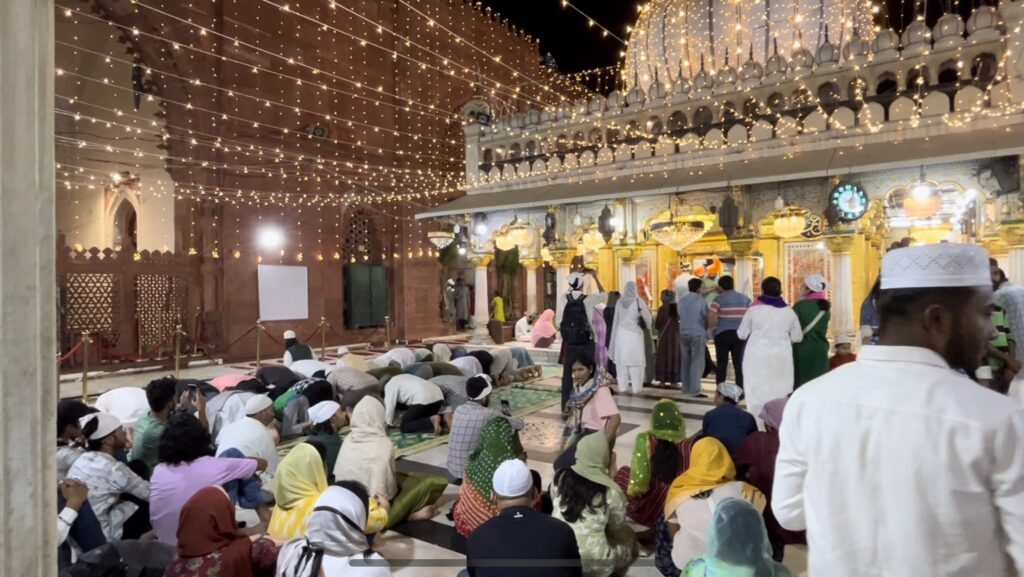
You encounter roses and decorative cloths to purchase, and you are then guided into the tomb where you place the cloths on the grave and empty the rose petals. There are layers of cloths and roses on the grave and some offer prayers in this small, crowded room which is a male-only space.
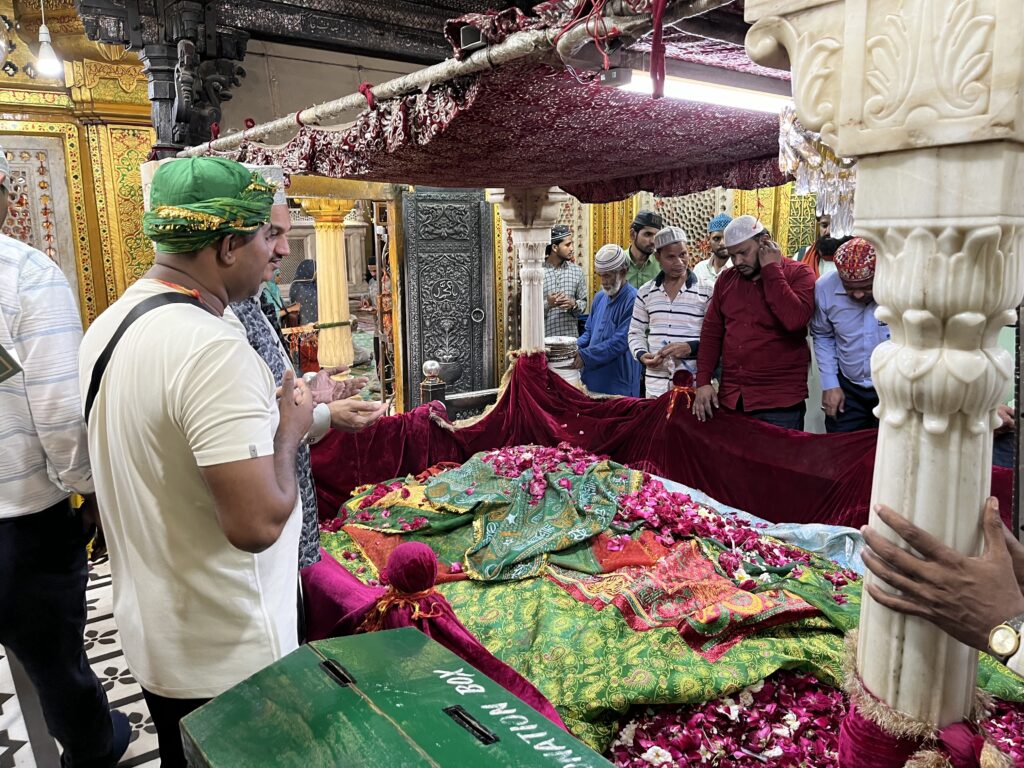
Outside, folks sit while waiting for the Sufi singing to start. There’s an opporunity to chat with other folks who are waiting until, after about an hour, the singers begin their hymns of praise.
In two decades of studying religion, I had never seen anything like this. It is captivating witnessing such heartfelt devotion amidst a mixed crowd of Muslims, Sikhs, Hindus and others present to visit the saints. Some Muslims criticize these practices, saying they verge on idolatry, but in India these customs are centuries old and popular with Muslims and non-Muslims alike.
(If you’d like some more video of visiting the Sufi tombs, here’s a 90 second clip of the visit)
Evening 2: The Jain Temple
The second night brings us to a Jain temple. Google maps has the location wrong meaning you accidentally discover an enormous and spectacular Sikh gurdwara and a Hindu temple, all within a kilometre of the Jain temple you seek. At this point in Delhi, stumbling upon incredible temples begins to feel normal.
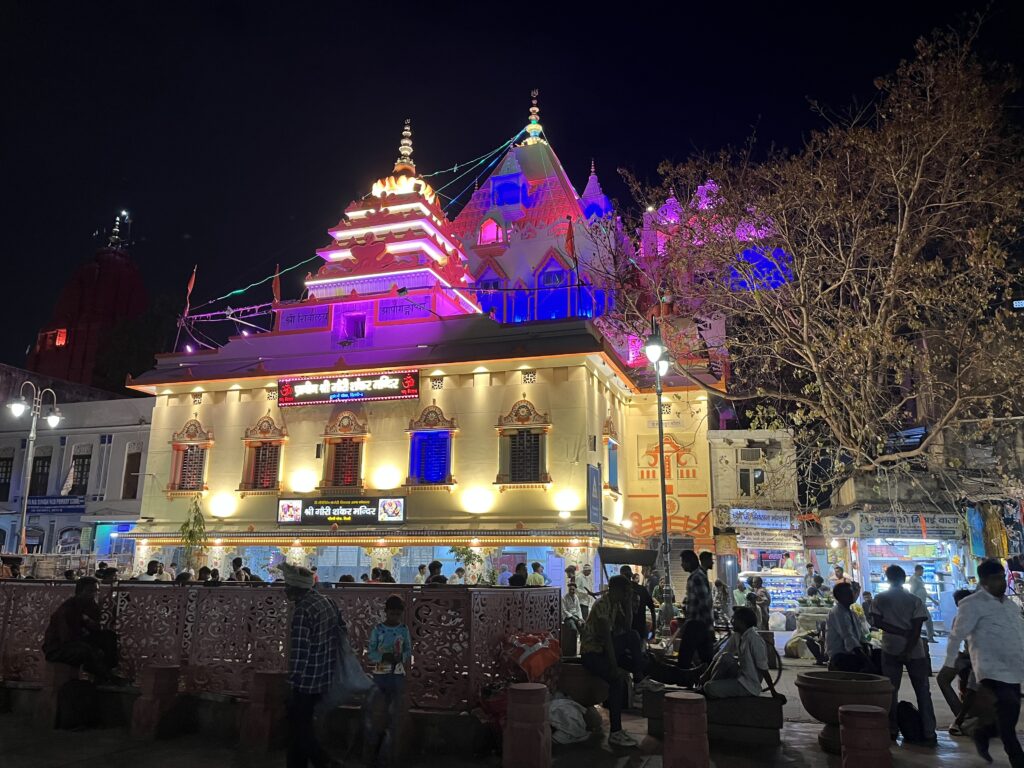
I found this marvelous Hindu temple by accident.
Jains are a small but ancient Indian religion founded at the same time as Buddhism. They are known for advocating non-violence and may have influenced Gandhi. They are so committed to non-violence that, in addition to being vegetarian, they avoid eating root vegetables since digging them up may harm creatures in the soil.
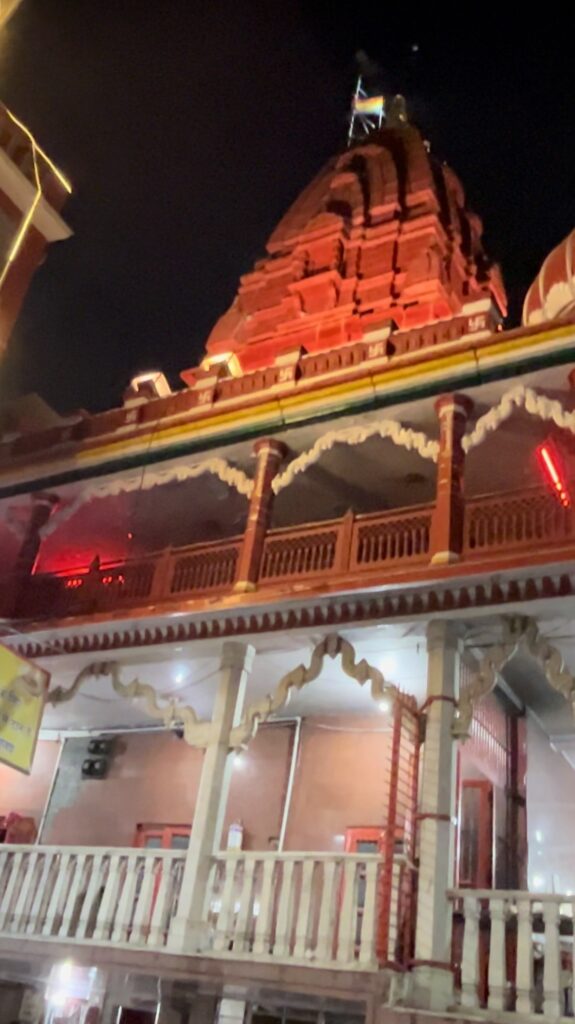
A beautiful Jain temple in Delhi.
Jain temples are not common in the West so visiting a temple of this size is a rare opportunity. In the first room you encounter, there are maybe 10 devotees and two naked monks. In one of Jainism’s two major branches, the monks are “skyclad,” meaning they wear no clothes since they reject things of this world, including clothes which can seem trivial and arbitrary.
The sound of singing draws you upstairs where you encounter a tiny room filled with enthusiastic chanting. The energy is palpable!
Again, where but in India will you find a spectacular Sikh gurdwara, a large Hindu temple, and this Jain gathering on a Friday night on one street? This country overflows with religious devotion.
(To see more about the Jain temple, see this short video here.)
Evening 3: The Hindu Temple
On the third evening, you’re a bit tired and decide to walk back to your room. The GPS is out-of-kilter however and leads you the wrong way.
Hence, you find yourself on a side street when, across six lanes of traffic, you hear religious singing on loudspeakers. After crossing the six lanes, you encounter about seven singers in a makeshift yellow tent singing in front of a small image of Hanuman, the Hindu god.
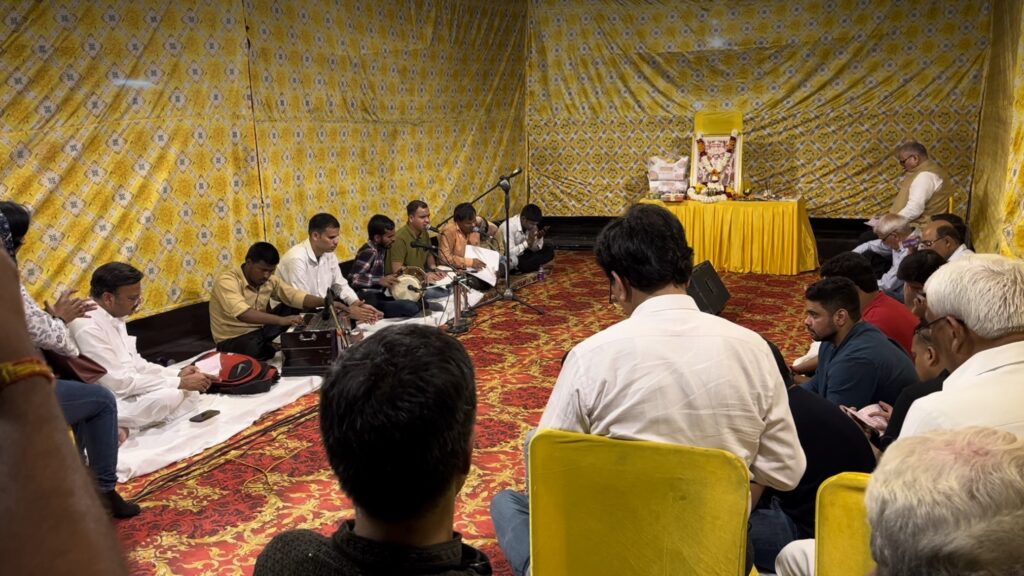
Outside the tent, there are many booths and vendors selling devotional items including large quantities of flowers (flowers are very popular at many temples). Upon stepping back, you notice that the strip mall backdrop actually contains a two-story Hindu temple within it. Then you notice the lines. Two big lines of devotees extending way outside the temple, many carrying flowers.
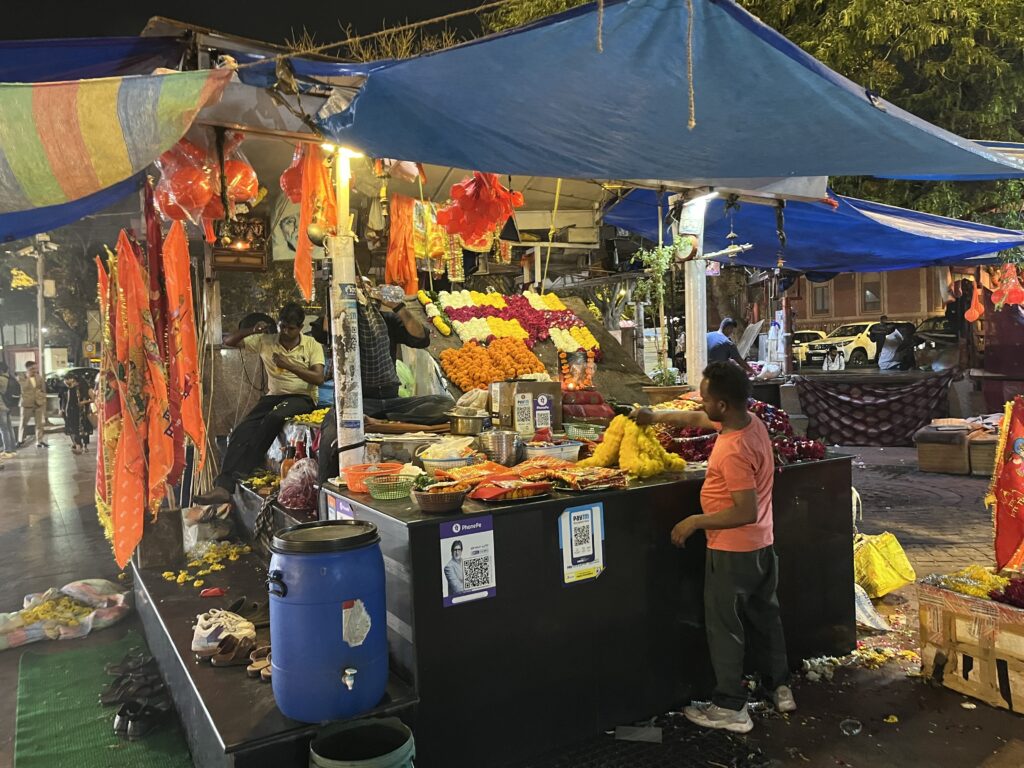
After joining the line, you are eventually ushered in. There is a real surge of people, especially at one bottleneck point. Flames are offered that people moved their hands over seeking blessing (see below) and there are bells many will ring to announce their presence to the deities. There are perhaps too many bodies for the size of the space, but it is captivating. We move into the main area, and people deposited flowers.
After, we enter other alcoves and rooms that have smaller shrines with well-known deities. In one corner, a holy man is teaching from some texts to about ten folks, speaking above the sounds of the prayers, the bells, and the chant coming from the tent outside.
Then, we find a very large Shiva lingam (a representation of Shiva as a cylindrical stone). Water is dripping on it, and people are touching the water and touching their heads. There are lineups at different shrines. Then we exit. Back outside, you gather your shoes and, putting them on, you see a monkey eating a coconut about three feet away. He adds to the overall sense of surprise that Delhi constantly brings its visitors.
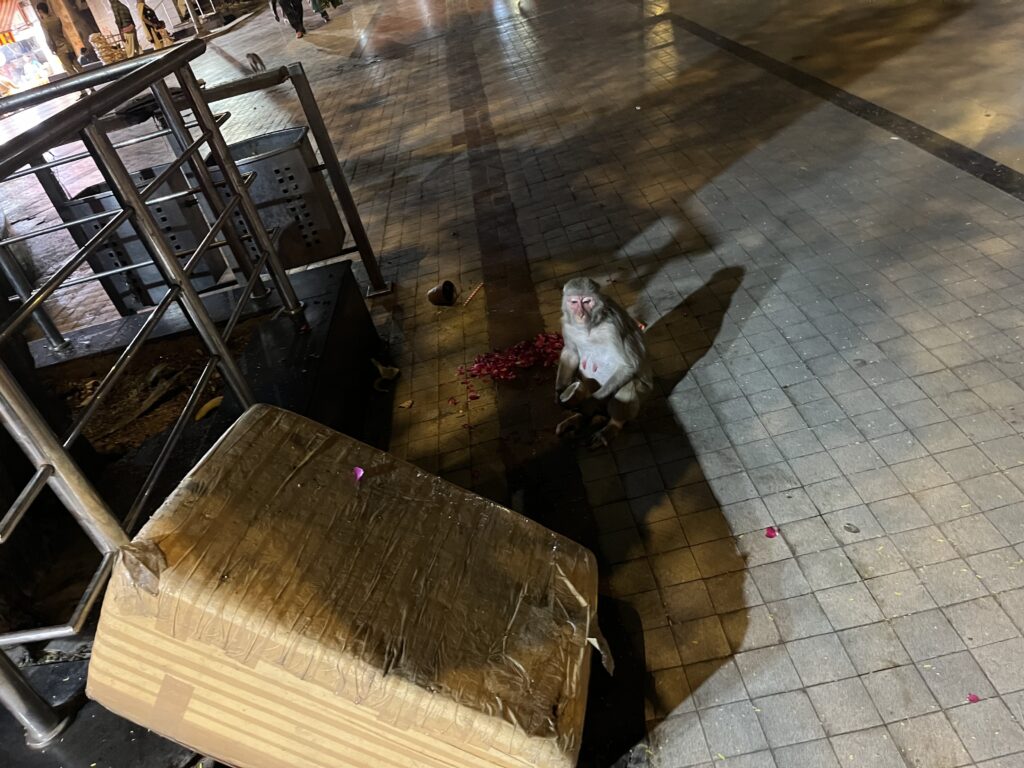
Most striking was the crowd’s energy and size. I have lived in a city of 150,000 people for twenty years and cannot ever seeing a crowd with so much enthusiasm. And this was a routine Saturday….at a small, non-descript temple incorporated into a kind of two-story strip mall….that you might find by accident on a side street.
Again, where else on earth would the above paragraph make sense?
Delhi is alive! I genuinely wonder if there is a more vibrant city anywhere. There are hard things, too. There’s poverty, and it can be stark. In terms of religion, I think India has no peer for the variety and vitality. The country’s politics do foster tensions between groups but at the street level, these communities exist side by side generally without any issue. Religion here is baked into ordinary life and is everywhere – marked on bodies, found in alcoves, and with religious structures that are as common as a Tim Hortons or a 7-Eleven in Canada.
There’s no way to communicate everything Delhi has to offer. I hope these three evenings give you a small taste of India.

